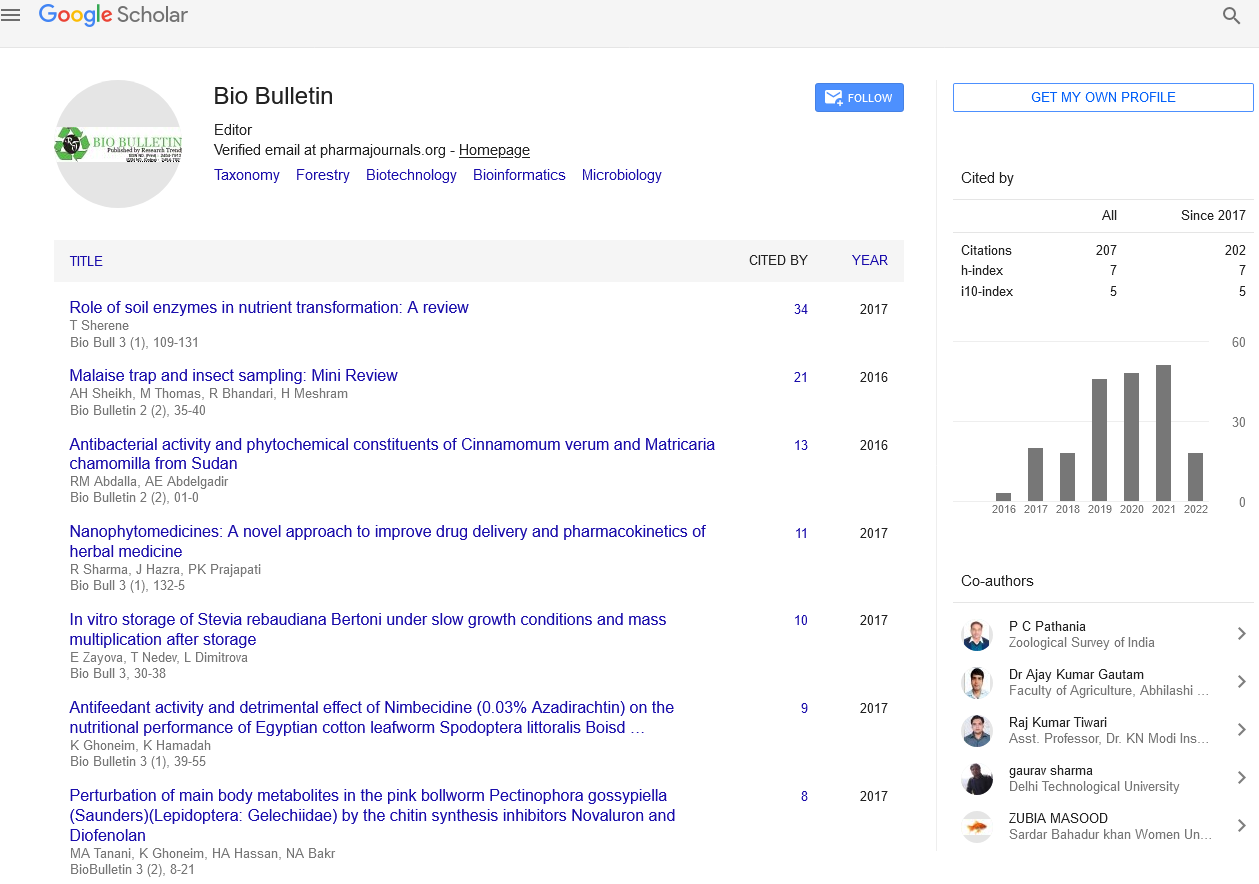Factors Effecting Dye Ligand Affinity Chromatography: A Purification Technique
Perspective - (2022) Volume 8, Issue 4
Description
A purification method that offers exceptional selectivity and high purity factors is dye affinity chromatography. Dye ligands may function as analogues of their respective enzymes' substrates, enabling affinities and interactions. In mammalian cell culture, a dye- ligand chromatography method is described in this chapter for removing proteins that have been overexpressed. In order to quickly choose binding and elution conditions, the approach begins with batch binding. Gradient elution is then used to increase the final packed bed chromatography method's selectivity. An accompanying sample chromatogram and instructions for purifying a protein from mammalian cell culture on Cibacron blue are provided. In a protein purification procedure for chromatography, synthetic dyes can function as substitute ligands for proteins. Compounds are separated from mixtures using chromatography. In order to extract certain proteins from a mixture, affinity chromatography is routinely employed. Here, the targeted proteins are captured when the sample is run through the chromatography column using ligands that interact with the targeted proteins.
Some of the ligands used in these columns are antibodies, lectins, and nucleotide cofactors; however, they are unstable, expensive, and have a limited capacity. They might not be easily soluble, which would be problematic for chromatography. Additionally, synthetic colours can function as protein ligands. The dyes employed have a reactive component, often a chlorotriazine ring, and are based on a chromophore, which is commonly either an azo, anthraquinone, or phthalocyanine. The dye's chromophore, which gives it colour, should have sulfonic groups in order for it to be soluble in water. The dye can bond to the matrix thanks to the reactive component. Numerous investigations have demonstrated that certain enzymes' nucleotide binding areas are easily bound by dyes like Cibacron Blue 3-GA. However, there's always a chance that the dye will bind to different parts of the proteins. Cibacron Blue 3-GA can bind to non- enzymatic proteins through ionic forces, hydrophobic contacts, or exclusion-diffusion.
Ionic forces are the method via which Cibacron Blue 3-GA attaches most frequently to proteins. The dye attaches to non-polar or positively charged sections of proteins via aromatic rings or proteins with positively charged region via sulfonate residues. Hydrophobic interactions are less frequently employed than ionic forces, and it appears that ionic strength increases them while lower temperatures diminish them. Exclusion-diffusion, although it doesn't happen often the exclusion-diffusion principle describes how unattached proteins with higher molecular weights are eliminated from the chromatography column first, followed by proteins with lower molecular weights. This appears to happen only around pH 9.
Numerous variables, such as dye concentration, buffer conditions, flow rate, and column geometry, affect the chromatography procedure. The procedures include purifying the dye, immobilising the dye on the chromatography matrix, and executing the chromatogram.
Purification of the dye-The dyes must first be cleaned because they are frequently stored in buffers with additional stabilisers and may potentially contain other impurities. For this, Labrou recommended using gel filtration and column chromatography. Immobilizing the dye onto the chromatography matrix- The dye is then adsorbed onto the matrix in the following step, either using a spacer molecule or a chlorotriazine ring. Due to less steric interference from the matrix, using a spacer molecule like hexamethyldiamine may boost dye selectivity. The matrix is rinsed to remove the extra dye once the dye has been immobilised. Running the chromatogram-Degassing is done before packing the matrix containing the dye into a chromatographic column, to stop the formation of air bubbles. Before loading the protein samples, the column is washed with buffer. Following the passage of the protein sample through the column, the column is once again washed with the buffer to get rid of any proteins that failed to attach to the dye. This fraction is then also collected. The bound proteins are subsequently released from the column using a second buffer, and the resulting second fraction is also obtained. The target protein or proteins are then checked for in both fractions.
Conclusion
Synthetic dyes are less expensive than other ligands, far higher capacity than other ligands, are resistant to chemical or enzymatic degradation, and are simple to immobilise onto the chromatographic matrix. This method is hence effective for the largescale purification of proteins. Despite these benefits, dyes are less selective than other kinds of ligands, which could limit their application. Alternately, this low specificity might be a benefit since it might eliminate the necessity for using numerous ligands. The design of the dyes has improved as a result of greater knowledge of how these dyes interact with proteins. The purpose of synthetic dyes, commonly referred to as "biomimetic dye-ligands," is to structurally, or by simulating the interaction between ligands and proteins, replicate biological ligands. These biomimetic dye ligands are thought to be more sensitive than older dyes.
Author Info
Anne F Worrall*Citation: Worrall AF (2022) Factors Effecting Dye Ligand Affinity Chromatography: A Purification Technique. Bio Bulletin, 8(4): 05-06.
Received: 21-Nov-2022, Manuscript No. BIOBULLETIN-22-84161; , Pre QC No. BIOBULLETIN-22-84161; Editor assigned: 24-Nov-2022, Pre QC No. BIOBULLETIN-22-84161; Reviewed: 08-Dec-2022, QC No. BIOBULLETIN-22-84161; Revised: 15-Dec-2022, Manuscript No. BIOBULLETIN-22-84161; Published: 22-Dec-2022, DOI: 10.35248/2454-7913.22.8.105
Copyright: This is an open access article distributed under the terms of the Creative Commons Attribution License, which permits unrestricted use, distribution, and reproduction in any medium, provided the original work is properly cited.

